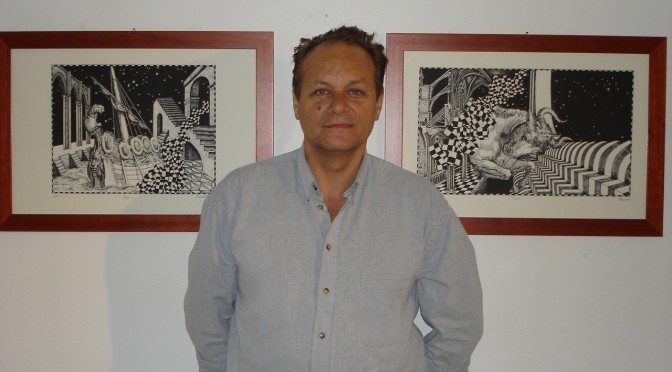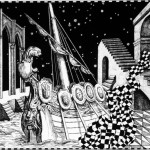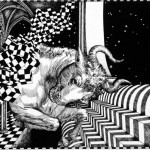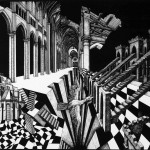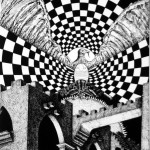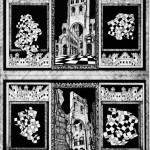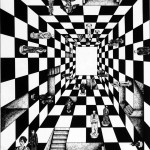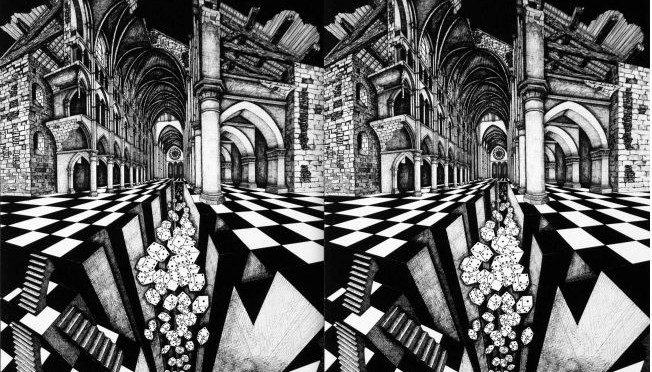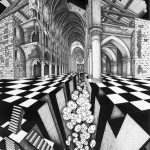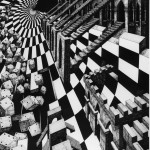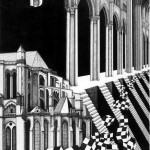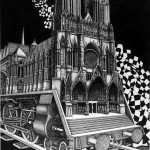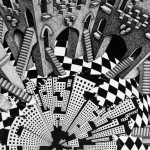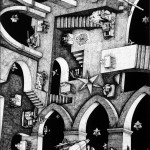Like the Italian artist and engraver Giovanni Battista Piranesi (1720-1778), whose follower he is, Jean-Pierre Luminet depicts space with passion and melancholy. By repeating ceaselessly black and white checkerboards, he evokes the notion of infinity and generates the dizziness of the glance. By disrupting the laws of classical perspective, he conjugates architectural immobility and time unsettledness. The artist immerses elements in a black ocean, and such a subtle interaction gives the sensation of perpetual time. Infinity is that aspiration felt by the man held on ground by gravitation. Jean-Pierre Luminet depicts this sensation by creating vanishing points towards which one feels irresistibly attracted.
Anne de Commines, Art criticsGalleries
Luminet’s Illuminations
Luminet’s reinstated visualization of a finite Universe, albeit one from which we can exit through one face and simultaneously enter through the opposite one, relies upon a keplerian form of mental sculpture that may be described as plastic rather than algebraic. Luminet’s characteristic lithograph, Big Bang, exploits the spatial vocabulary of perspective to evoke realms beyond the three dimensional. Whereas Escher relied on contradictions and oscillating ambiguity in his graphic art, Luminet suggests plunging, interpenetrating and matter organizes itself into structures on the right; the tumbling dice on the left imply irreversible disorganization arising from chance. The remarkable range of Luminet’s creativity in art and science is integral to his agenda to recreate what he calls a « humanism of knowledge » — not that the arts and sciences are somehow to be conflated, because they work in very different ways, with illogical and logical means. But Luminet argues that they well up from the same instincts and intuitions: « I do not believe that we acquire at the beginning the ‘heart of an artist’ or the ‘heart of a scientist’. There is simply within oneself a single devouring curiosity about the world. This curiosity pushes us to explore it through various languages and modes of expression, » he says.
Martin Kemp, professor of the history of art at the University of Oxford. Excerpt from “Luminet’s Illuminations : Cosmological Modelling and the Art of Intuition”, Nature, 20 november 2003, vol. 426, p. 232
